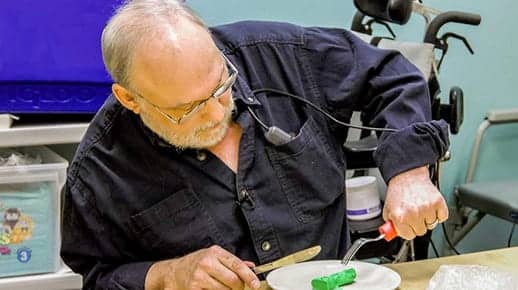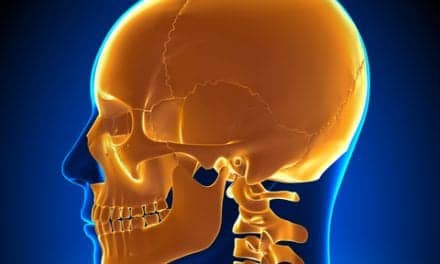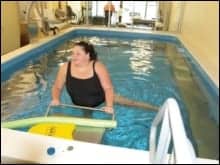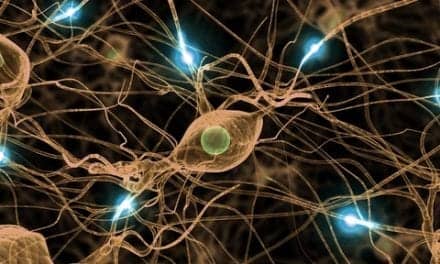
Study participant Ken Meeks tests the use of Vivistim therapy to help him regain use of his arms after experiencing a stroke following a car accident. (Photo courtesy of Ohio State University Wexner Medical Center)
An experimental treatment called Vivistim therapy is being tested for use with stroke patients to help them regain some function in their arms.
The therapy involves the use of a neurotransmitter implanted just below the skin on the chest during a minimally invasive outpatient surgery. The device is connected to the vagus nerve in the neck, which transmits signals to the brain.
A study being conducted at the Neurological Institute at Ohio State University’s Wexner Medical Center, as well as at other institutions across the United States and in the United Kingdom is investigating whether use of the device along with rehabilitative therapy may help improve patients’ upper limb movement after a stroke, according to a news story from Healthline.
Marcia Brockbrader, MD, PhD, one of the study’s principal investigators, notes that the device may be promising, but it won’t be a quick fix. It doesn’t work on its own, she adds.
“It’s a device that helps the brain get into a state where it can benefit more from therapy. There’s a button that the therapist presses to activate the device as participants do therapy. The intent of the pulse is much like a heart pacer — to pace the brain. It’s about half a second of stimulation. We think that this very brief pulse is like a ‘wake up and pay attention’ to the brain to use what happens next to help relearn how to use a paralyzed limb,” she explains.
Bockbrader states this trial is focusing on the upper limbs in part because people need their hands to take care of themselves.
“If you can use your hands, you can do a lot of what you need to do with a wheelchair. If you can’t use your hands, you need people around to help more,” she says.
According to the news story, 13 institutions in the United States and five institutions in the United Kingdom are participating in this trial, and they are still seeking participants.
“We’re looking at people in the chronic phase of stroke because it gives them the chance to recover naturally as much as possible,” Bockbrader states.
The typical participant is about 9 months out from a stroke and has done all the therapies they’re eligible for. In addition, per the news story, researchers are choosing a middle-of-the-road impaired population who can flex and extend the wrist and move the thumb, but can’t use their hands the way they should for daily living.
“This suggests to us that connections between the arm and the brain are still there but not working at 100 percent efficiency. There’s still room for improvement. If the device is found to be effective, we can start looking at whether it can be beneficial for those more severely affected by stroke. It’s early on in the evaluation process,” Bockbrader shares.
Recruitment will probably continue for the next 2 years.
Bockbrader says the study is a complicated three-phase design. The initial two phases can last up to a year and a half.
“But if people choose to, we will keep the stimulator in and follow them yearly after that. There’s no end in sight for people who want to keep the stimulator in place and feel it’s helping. If they don’t, removal is a short outpatient surgery,” she notes.
Patients interested in participating in the study should contact the recruitment office at their nearest participating institution, according to the news story.
[Source: Healthline]





Had a stroke left side Paralyzed
3 year post stroke survivor with limited hand and arm movement very interested in this new research trial